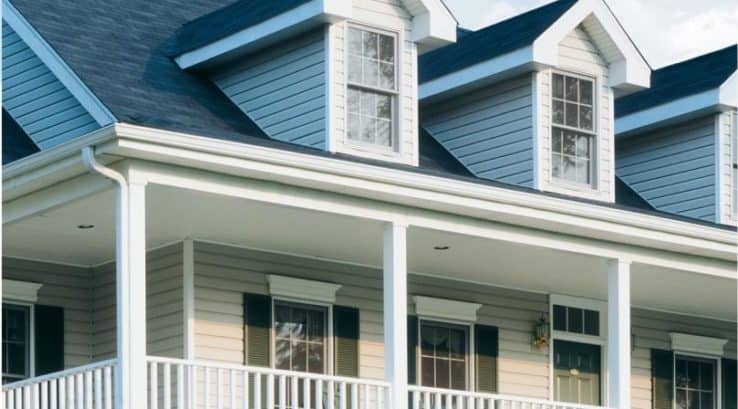If the exterior of your home is clad in siding – aluminum, wood, asbestos, or fiber cement – there may come a time when you want to replace it. Older siding can become faded or damaged over time, and replacing just a few boards would show an obvious difference in color between the new and old boards. Wood siding may become rotted from moisture damage, or cracked from years of expanding and contracting from moisture and humidity changes. You might be tired of the regular maintenance required for wood siding. Or maybe you’re ready to change and update the look of your home.
Whatever your reason, when you decide to undertake a siding replacement project you should educate yourself on the process. First and foremost, the siding you choose will protect your home from the elements like rain, snow, and wind. New siding should also complement the style of your home, highlight architectural features, and improve the curb appeal.
To protect the structural bones of your home, you need to be sure the proper materials are installed under the siding itself. Water penetration can be devastating to your home. If water is allowed to penetrate the exterior barrier, it can possibly go unnoticed for months or even years. It can cause the wood framing and sheathing to rot, can find its way deeper inside and damage your walls, and allow dangerous mold to grow. It’s important that your siding installers wrap your home in a watertight house wrap. Another option is a breathable membrane wrap that keeps water out but allows air to circulate.
How will the actual process go for your siding installation? You should expect the project will take longer than one day for a typical home. Work with your installation contractor to figure out how long to expect them at your home. Before they begin work, inspect the siding materials to be sure they are the proper style and color you ordered. This is a good time to let the installer know if you have any plans to replace exterior light fixtures, door bells, or house numbers that might require modification in the way they install the siding in those areas.
A reputable company will ensure proper cleanup is done throughout the process, even when the project takes multiple days to complete. Any construction debris can be hazardous to the occupants of your home, so cleanup should be done at the end of each day throughout the project. Depending on how much of your old siding is removed, a dumpster may be brought to the site for debris removal.
Once the job is complete, be sure to walk around the entire house with the installers. They should ask you to inspect all work areas to make sure you are 100% satisfied with the installation as well as the clean up. They should also talk to you about the proper care and cleaning of your siding.
One final note: be sure you’re clear about the warranty on your new siding. Vinyl siding is one of the most durable materials you can choose, and most warranties are for at least 30 years, with many warrantied for 50 years. A good warranty should cover the labor and installation work as well as all materials. Any warranty that covers only a short period of time or doesn’t address potential problems in the future due to installation should be seriously reconsidered.


